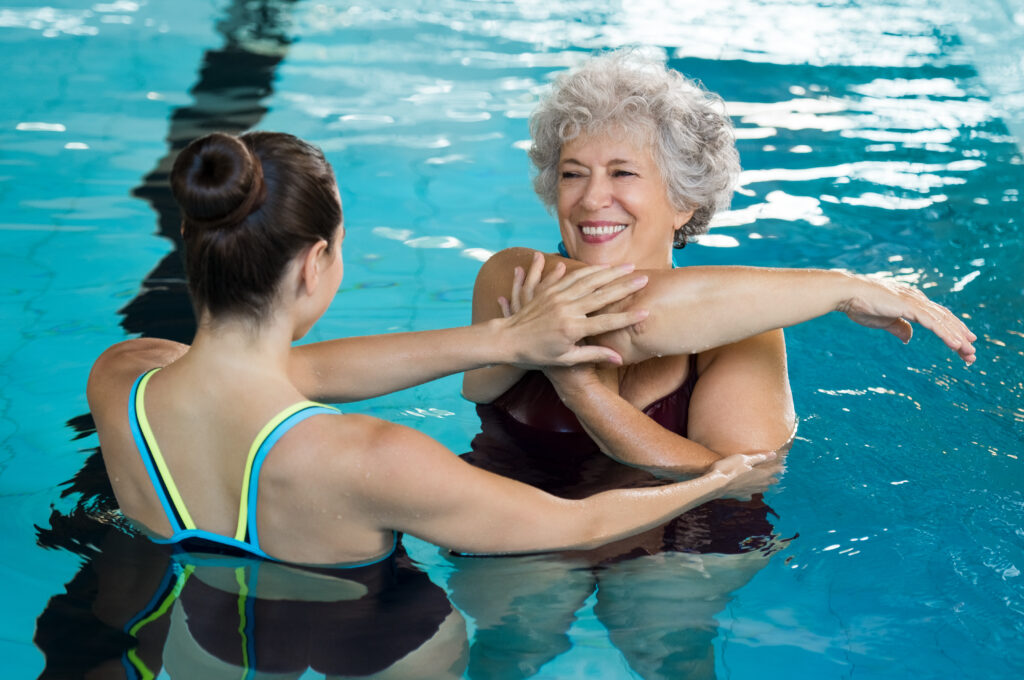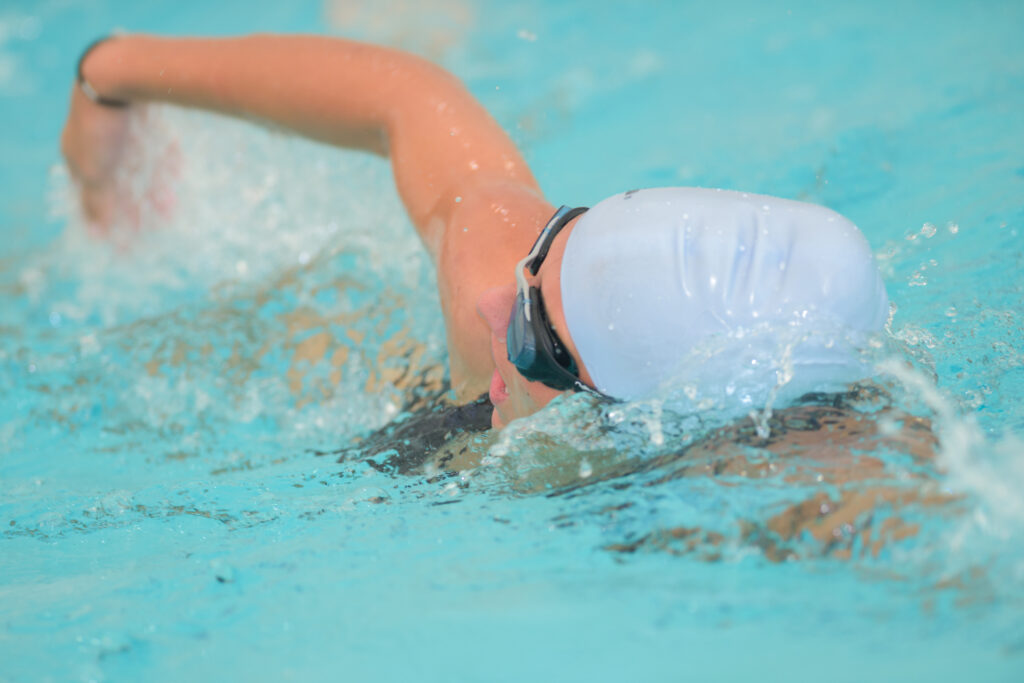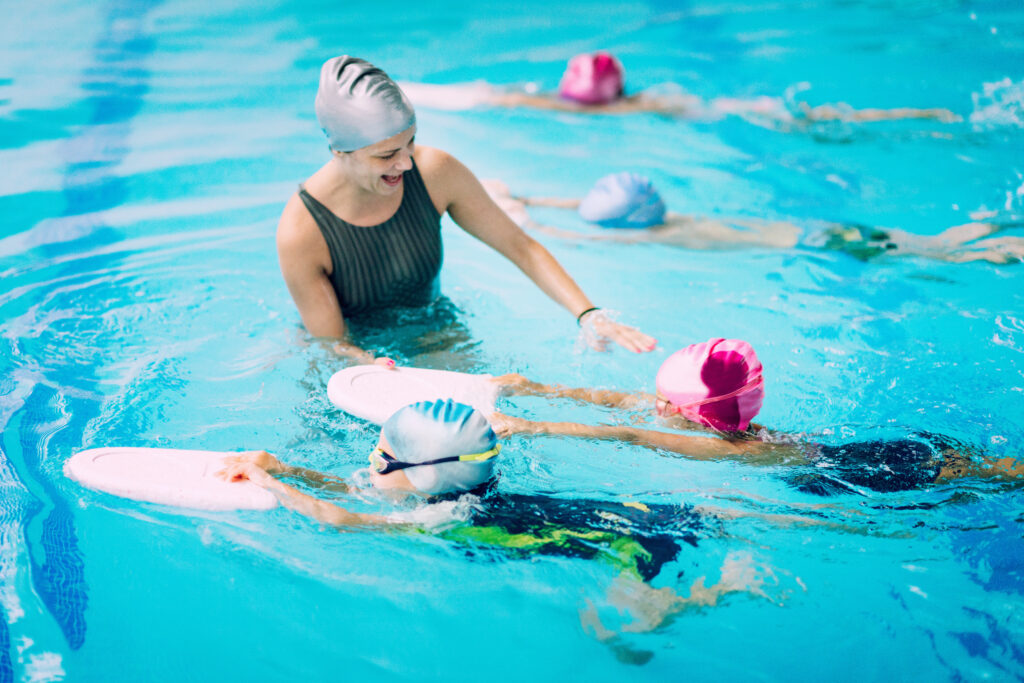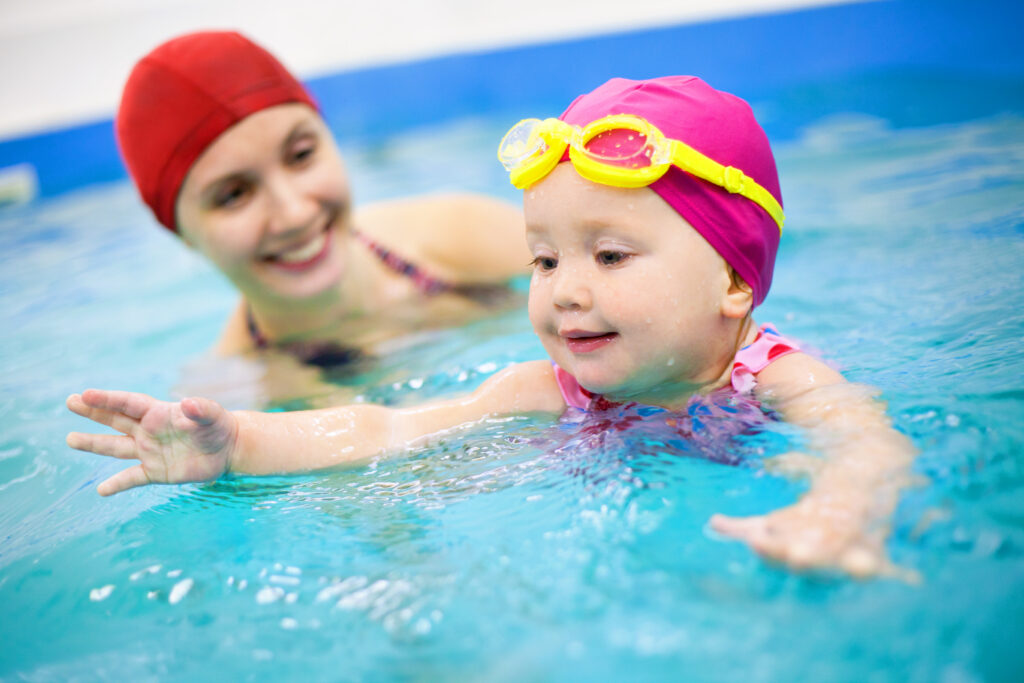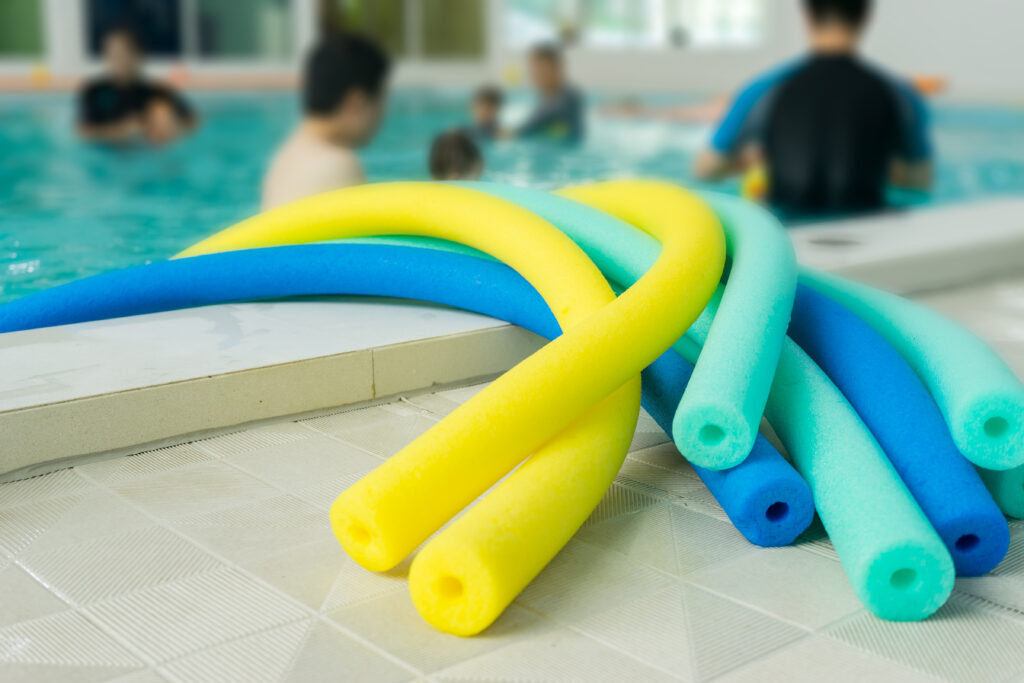Swimming is an excellent low-impact exercise that is easy on the joints and muscles, making it ideal for older adults. It is a great way to stay active and healthy, and has numerous physical and mental benefits. Swimming can help to improve cardiovascular health, increase muscle strength and flexibility, and reduce the risk of chronic diseases such as arthritis and osteoporosis.
As people age, their joints and muscles tend to become stiffer and weaker, making it more difficult to engage in high-impact activities such as running or weightlifting. Swimming, on the other hand, is a low-impact exercise that can be done at any age and fitness level. It provides a full-body workout that can help to improve joint mobility, increase muscle strength and flexibility, and reduce the risk of injury.
In addition to its physical benefits, swimming can also have a positive impact on mental health. It is a relaxing and meditative activity that can help to reduce stress and anxiety, improve mood, and boost overall wellbeing. Swimming can also be a social activity, providing an opportunity to connect with others and build relationships.
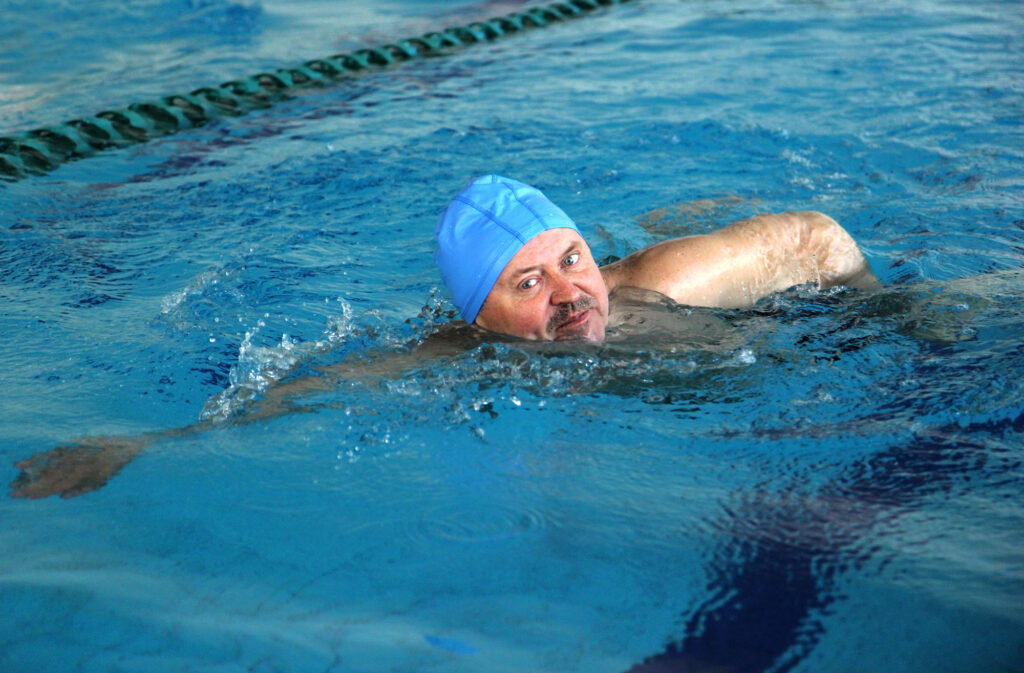
Key Takeaways
- Swimming is a low-impact exercise that is ideal for older adults.
- Swimming can help to improve joint mobility, increase muscle strength and flexibility, and reduce the risk of chronic diseases such as arthritis and osteoporosis.
- In addition to its physical benefits, swimming can also have a positive impact on mental health by reducing stress and anxiety, improving mood, and providing a social outlet.
Physical Benefits of Swimming
Swimming is an excellent form of physical activity for older adults as it offers numerous health benefits. Below are some of the key benefits of swimming for older adults:
Improving Muscle Strength and Tone
Swimming is a full-body workout that engages almost every major muscle group in the body, making it an effective way to build strength and tone muscles. It is particularly beneficial for strengthening the core and back muscles, which can help improve posture and reduce the risk of back pain.
Enhancing Joint Health
Swimming is a low-impact exercise that is gentle on the joints, making it an ideal form of physical activity for older adults with joint pain or arthritis. The buoyancy of the water also helps reduce stress on the joints, making it easier to move and exercise without experiencing pain.
Boosting Cardiovascular Fitness
Swimming is a great cardiovascular exercise that can help improve heart health and lower the risk of heart disease. It increases heart rate without putting stress on the body, making it a safe and effective way to improve cardiovascular fitness.
Assisting Weight Management
Swimming is an excellent way to burn calories and lose weight. It is a high-intensity workout that can help increase metabolism and burn fat, making it an effective way to manage weight and reduce the risk of obesity.
Increasing Flexibility and Mobility
Swimming can help improve flexibility and mobility by stretching and strengthening the muscles. It is particularly beneficial for older adults with limited mobility or flexibility, as it can help improve range of motion and reduce the risk of falls.
Promoting Bone Health
Swimming is a weight-bearing exercise that can help improve bone density and reduce the risk of osteoporosis. It is particularly beneficial for post-menopausal women who are at an increased risk of developing osteoporosis.
Supporting Recovery from Injury
Swimming is a low-impact exercise that can help support recovery from injury or surgery. It can help reduce pain and inflammation, improve range of motion, and promote healing.
Alleviating Symptoms of Specific Conditions
Swimming can help alleviate symptoms of specific conditions such as arthritis, osteoarthritis, dementia, asthma, multiple sclerosis, type 2 diabetes, high blood pressure, and fibromyalgia. It can also help reduce the risk of developing these conditions.
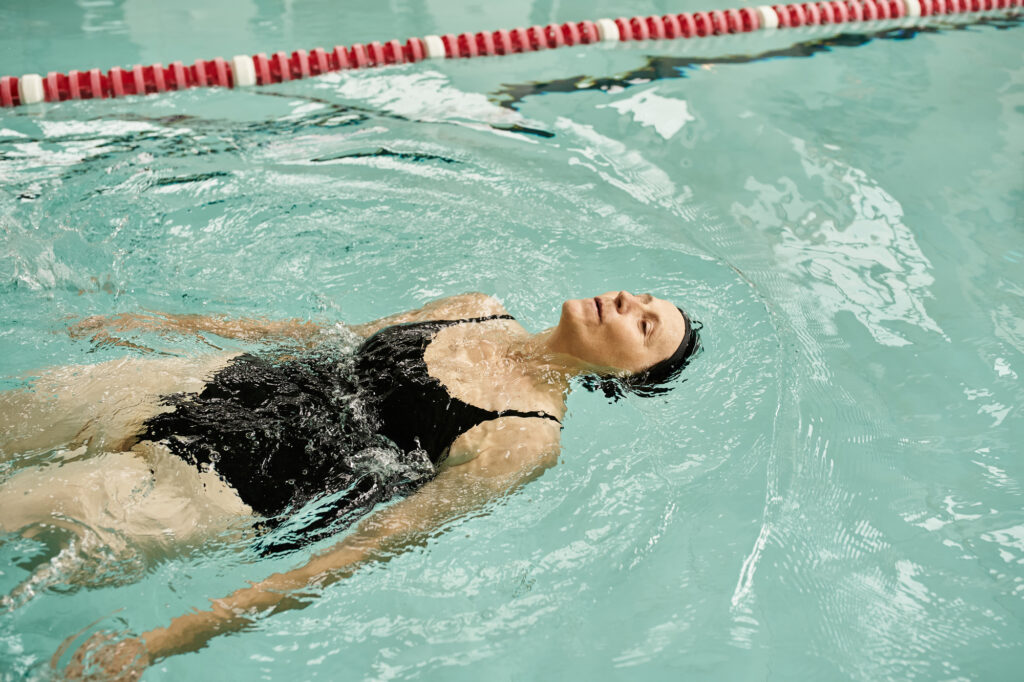
Improving Endurance
Swimming is an excellent way to improve endurance and increase stamina. It can help increase the amount of oxygen that the body can use, making it easier to perform physical activities and reduce the risk of fatigue.
Enhancing Muscle Balance
Swimming can help enhance muscle balance by working all major muscle groups in the body. It is particularly beneficial for older adults who may have muscle imbalances due to a sedentary lifestyle or previous injuries.
Reducing Risk of Falls
Swimming can help reduce the risk of falls by improving balance, coordination, and muscle strength. It is particularly beneficial for older adults who are at an increased risk of falls due to age-related changes in balance and mobility.
Mental Health Advantages
Swimming is not only beneficial for physical health but also for mental health. It is an excellent way to improve mood, decrease stress and anxiety, and aid sleep patterns. Moreover, swimming has cognitive benefits for older adults and can improve their quality of life.
Decreasing Stress and Anxiety
Swimming is a great way to decrease stress and anxiety. It releases endorphins, which are the body’s natural feel-good hormones, and helps to reduce cortisol levels, which are associated with stress. According to a study published in the International Journal of Stress Management, swimming can significantly decrease anxiety levels and improve mood.
Improving Mood and Quality of Life
Swimming can also improve mood and quality of life. It is a low-impact exercise that can be done at any age, making it an excellent activity for older adults. A study published in the Journal of Aging and Physical Activity found that swimming can improve mood and quality of life in older adults. It can also reduce symptoms of depression and anxiety.
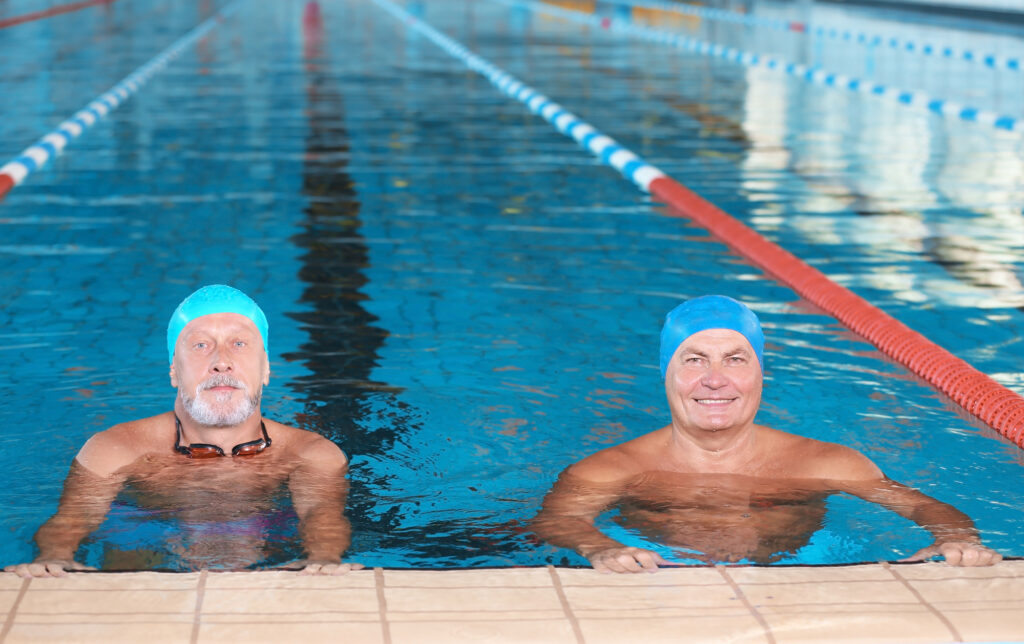
Aiding Sleep Patterns
Swimming can aid sleep patterns. According to a study published in the Journal of Sleep Research, swimming can improve sleep quality and reduce the time it takes to fall asleep. It is an excellent way to relax and unwind after a long day, which can help to promote better sleep.
Cognitive Benefits for Older Adults
Swimming has cognitive benefits for older adults. It can improve cognitive function and reduce the risk of dementia. According to a study published in the Journal of Aging and Physical Activity, swimming can improve cognitive function in older adults. It can also reduce the risk of developing dementia by up to 50%.
In conclusion, swimming has many mental health benefits, including decreasing stress and anxiety, improving mood and quality of life, aiding sleep patterns, and providing cognitive benefits for older adults. It is an excellent way to improve overall health and wellbeing in later life.
Accessibility and Learning
Swimming is an accessible activity for people of all abilities. Whether someone has a physical disability or is pregnant, there are opportunities to learn to swim and enjoy the benefits of this low-impact exercise.
Swimming for Different Abilities
Swimming can be adapted to suit different abilities. For those with physical disabilities, there are adaptive swimming programs that can help individuals improve their mobility and overall fitness. According to Just Swim, “Movements in water are easy to adapt if you have a disability.” Swimming can also be a great exercise for pregnant people, as it is gentle on the joints and can help relieve discomfort.
Opportunities for Older Adults to Learn to Swim
It’s never too late to learn to swim. Many pools offer swim lessons for older adults, providing an opportunity to improve fitness and mobility. The University of Warwick explains that “Your muscle movements will constrict and loosen during swimming which will increase your muscle strength, and in turn, strengthen ageing bones.” Swimming can also be a social activity, providing an opportunity for older adults to connect with others in their community.
Affordability and Availability of Swimming
Swimming is an affordable activity for many people. Public pools often offer discounted rates for seniors and people with disabilities. Swimming clubs can also be an affordable option for those who want to swim regularly. It’s important to note that not all communities have access to a pool, so availability can be a barrier for some.
Social Aspects of Swimming
Swimming can be a social activity, providing an opportunity for people to connect with others in their community. Joining a swimming club or attending group swim lessons can be a great way to meet new people and stay motivated to exercise.
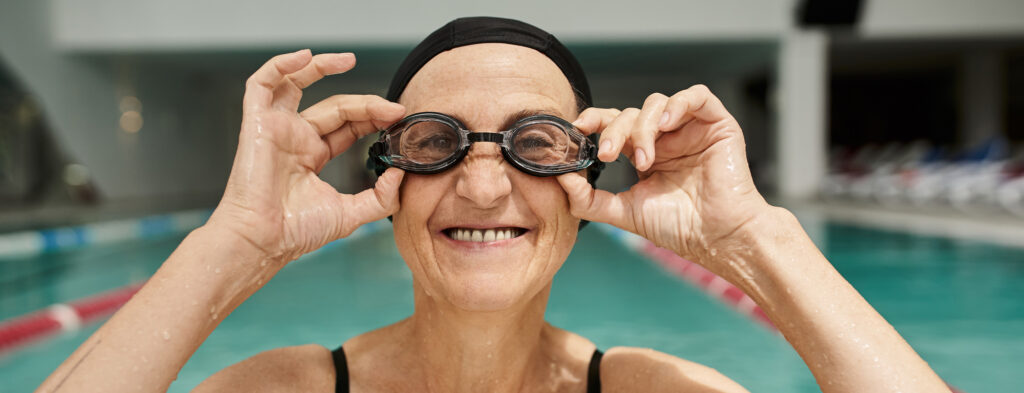
Safety Measures and Considerations
It’s important to take safety measures when swimming. Always swim in a supervised area with a lifeguard on duty. If someone has a physical disability or arthritis, they should consult their healthcare provider before starting a swimming program. It’s also important to be aware of any safety considerations, such as avoiding swimming alone or swimming in areas with strong currents.
In summary, swimming is an accessible and low-impact exercise that can provide numerous benefits for people of all abilities. With opportunities to learn to swim, affordable options, and social aspects, swimming can be a great way to improve fitness and overall health.
Swimming Techniques and Exercises
Overview of Swimming Strokes
Swimming is a low-impact exercise that can be beneficial for joint and muscle health. Different swimming strokes target different muscle groups, making it a versatile exercise option. The four main swimming strokes are freestyle, butterfly, breaststroke, and backstroke. Freestyle is the most common stroke and is great for building endurance. Butterfly requires a lot of upper body strength and is great for building muscle strength. Breaststroke is a slower stroke that works the chest, arms, and legs. Backstroke is great for working the back and shoulders.
Aquatic Exercises Beyond Swimming
In addition to swimming, there are many other aquatic exercises that can be beneficial for joint and muscle health. Water aerobics is a popular option that involves performing exercises in water, which provides resistance and buoyancy. This can be a great option for those who have difficulty with weight-bearing exercises. Other aquatic exercises include walking or running in water, which can help build endurance and improve cardiovascular health.
Strength Training in Water
Strength training in water can be a great way to build muscle strength without putting too much stress on the joints. Water provides resistance, which can help build muscle strength. Exercises like water squats, push-ups, and lunges can be great for building lower body strength. For upper body strength, exercises like water dumbbell curls and tricep extensions can be effective.
Swimming for Specific Fitness Levels
Swimming can be a great exercise option for people of all fitness levels. For those who are just starting out, it can be a low-impact way to get moving and build endurance. For more advanced swimmers, different strokes and interval training can be used to increase the intensity of the workout and build muscle strength. It is important to consult a doctor before starting any new exercise program, especially if you have any joint or muscle conditions.
In summary, swimming and aquatic exercises can be a great way to improve joint and muscle health. Different swimming strokes target different muscle groups, making it a versatile exercise option. Aquatic exercises beyond swimming, like water aerobics, can also be beneficial. Strength training in water can be a great way to build muscle strength without putting too much stress on the joints. Swimming can be a great exercise option for people of all fitness levels, but it is important to consult a doctor before starting any new exercise program.
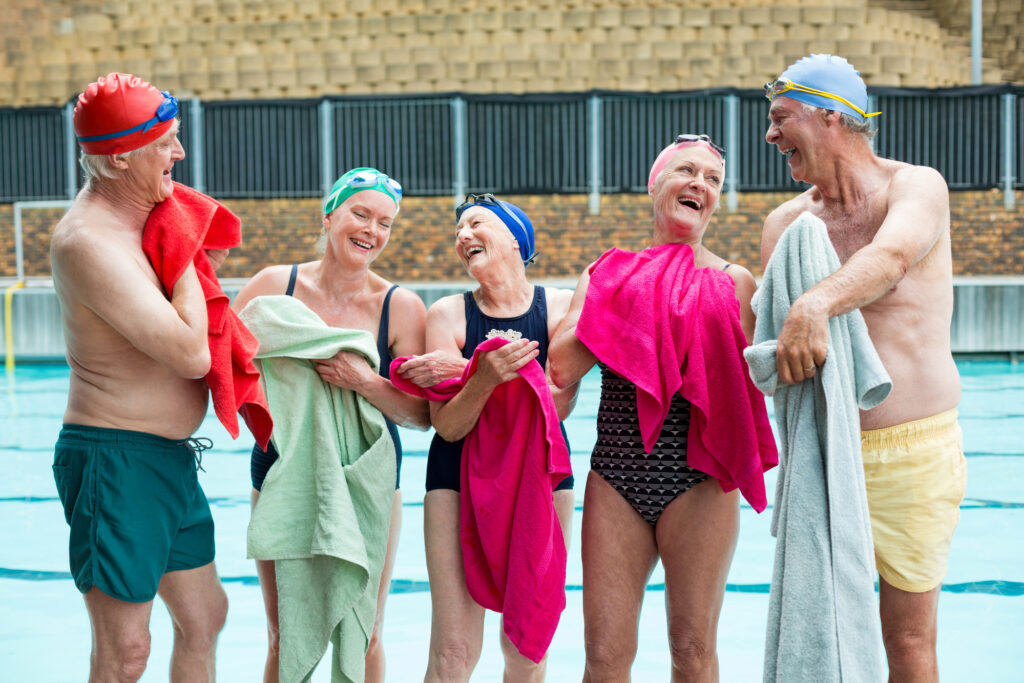
Conclusion
Swimming is an excellent exercise for older adults looking to maintain their joint and muscle health. It is a low-impact activity that can help improve mobility and flexibility, reduce pain and stiffness, and increase muscle strength. Swimming can also offer a range of other health benefits, such as improved cardiovascular health, weight management, and mental wellbeing.
Incorporating swimming into a regular exercise routine can help older adults maintain a high quality of life and stay independent for longer. It is a fun and social activity that can be enjoyed alone or with friends and family. It is also a great way to cool down during hot weather, making it a versatile exercise option.
Overall, swimming is a safe and effective exercise for older adults looking to maintain their joint and muscle health. With its numerous health benefits and low-impact nature, it is an excellent exercise option for those looking to stay active and healthy in later life.
Frequently Asked Questions
How can swimming alleviate arthritis symptoms in the knees?
Swimming is a low-impact exercise that can help alleviate arthritis symptoms in the knees. According to a Spire Healthcare article, swimming can help strengthen the muscles around the joints, which can reduce the pressure on the joints themselves. Additionally, the buoyancy of the water can help reduce the weight that the knees have to support, which can relieve pain and discomfort.
What are the psychological advantages of swimming for older adults?
Swimming can provide a range of psychological benefits for older adults. According to Sport England, swimming and aquatic activities can be beneficial for people with mental health concerns. Swimming can also provide a sense of relaxation and stress relief, which can be particularly important for older adults who may be dealing with a range of stressors.
What might be some potential drawbacks of swimming for seniors?
While swimming can be a great way for seniors to stay active and healthy, there are some potential drawbacks to consider. According to a Cleveland Clinic article, seniors who have certain health conditions, such as respiratory problems or skin allergies, may need to take special precautions when swimming. Additionally, seniors who are not accustomed to swimming may need to start slowly and gradually build up their endurance to avoid injury.
In what ways does regular lap swimming benefit seniors?
Regular lap swimming can provide a range of benefits for seniors. According to NHS inform, swimming can help reduce the risk of serious illnesses such as heart disease, type 2 diabetes, and stroke. Swimming can also help seniors maintain a healthy weight, improve their balance and coordination, and reduce their risk of falls.
How does swimming contribute to joint strength in the elderly?
Swimming can help contribute to joint strength in the elderly by providing a low-impact, full-body workout. According to Bluecoat Sports, swimming can help improve circulation and strengthen the heart muscles, which can in turn help improve joint health. Additionally, swimming can help improve muscle tone and flexibility, which can help reduce the risk of joint injury.
What are the specific benefits of swimming for individuals aged 50 and over?
Swimming can provide a range of benefits for individuals aged 50 and over. According to Sport England, swimming can help improve balance and coordination, reduce the risk of falls, and help maintain bone density. Swimming can also provide a low-impact, full-body workout that can help seniors maintain their overall health and wellbeing.


